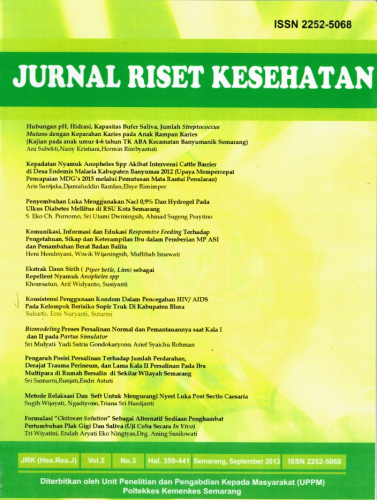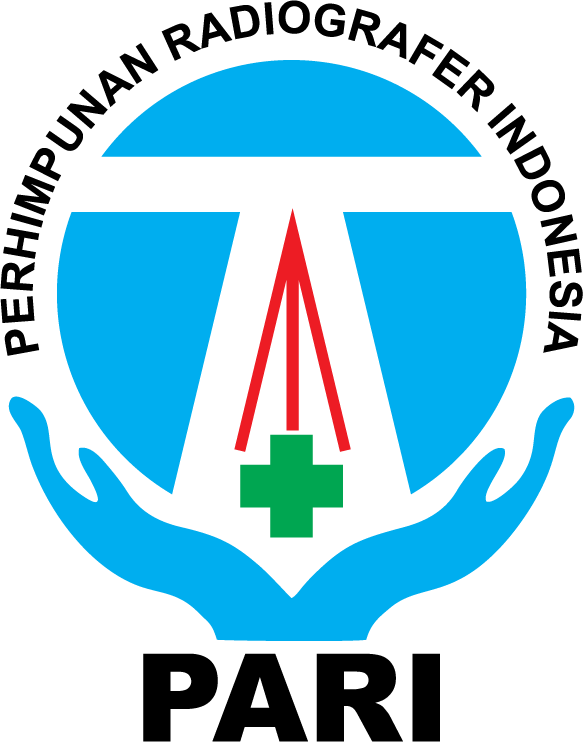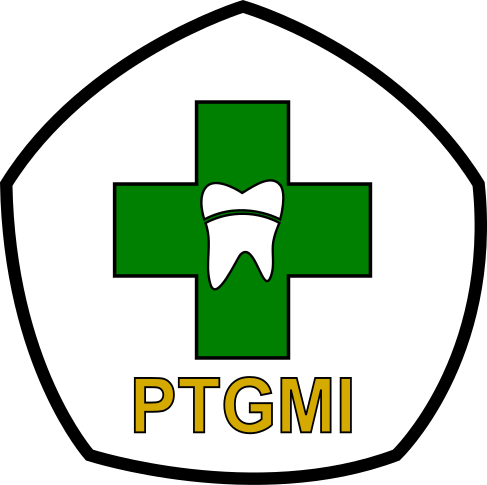DIFFERENCES OF INHIBITION ZONE FOREST PURE HONEY AND CINNAMON (Cinnamomum burmani) AS ANTIBACTERIAL BACTERIAL COMPOUNDS OF MEMBERS OF THE Enterobacteriaceae FAMILY
Abstract
Honey and cinnamon are plant products that have many properties, one of which is used as an antibacterial agent for various diseases. The effectiveness of the two active substances against bacteria in the Enterobacteriaeae family is unclear. The study was conducted to determine the differences in the effectiveness of forest honey and cinnamon in inhibiting the growth of bacteria in the Enterobacteriaceae family. This research method is an experimental study with a combination method of diffusion and wells using samples of the bacteria Klebsiella pneumoniae, Esherichia coli, Salmonella typhi, Serratia marcescens, and Enterobacter cloacae. Forest pure honey and cinnamon were prepared as test solutions with concentrations of 25%, 40%, 55%, 70%, 85% and 100%. The results obtained were the inhibition zone formed on Nutrient Agar Plate (NAP) media, in forest pure honey the inhibition zone formed in S. typhi, E. coli, Klebsiella pneumoniae, Serratia marcescens, and Enterobacter cloacae was greater at 100% concentration, namely 30.5mm, 32.5mm, 38mm, 29.5mm, 26mm, while the 100% concentration of cinnamon showed results, namely 12mm, 10mm, 8.5mm, 11mm, and 11mm. Conclusion is Forest pure honey was more effective at inhibiting bacteria from the Enterobacteriaceae family than cinnamon.
Keywords
Full Text:
PDFReferences
Ajizah, A. (2004) ‘Sensitivitas Salmonella Typhimurium Terhadap Ekstrak Daun Psidium Guajava L .’, Sensitivitas Salmonella Typhimurium terhadap Ekstrak Daun Psidiumguajava L, 1, pp. 31–38.
Balchin, M. L. (2006) ‘Aromatheraphy science’, London: Pharmaceutical Press, 1 Ed.
Darmawati, S. et al. (2011) ‘Keanekaragaman Spesies Bakteri pada Kultur Darah Widal positif Asal Kota Semarang Berdasarkan Karakter Fenotipik’, pp. 496–501.
Hariyati, L. F. (2010) ‘Aktivitas Antibakteri Berbagai Jenis Madu Terhadap Mikroba Pembusuk (Pseudomonas Fluorescens Fncc 0071 Dan Pseudomonas Putidancc 0070)’, UPT Perpustakaan Universitas Sebelas Maret.
Herawati, D. et al. (2015) ‘UJI AKTIVITAS ANTIBAKTERI BEBERAPA JENIS MADU TERHADAP Pseudomonas aeruginosa DAN Staphylococcus aureus DENGAN METODE DIFUSI AGAR’, 2(1), pp. 26–32.
Hidayati, Ernin, Nuryati Juli, dan E. M. (2002) ‘Isolasi Enterobacteriaceae Patogen dari Makanan Berbumbu dan Tidak Berbumbu Kunyit (Curcuma longa L.) Serta Uji Pengaruh Ekstrak Kunyit (Curcuma longaL.) Terhadap Pertumbuhan Bakteri Yang Diisolasi’, FMIPA Universitas Nahdlatul Wathan- Mataram. Bandung.
Huda, M. (2013) ‘Pengaruh Madu Terhadap Pertumbuhan Bakteri Gram Positif (Staphylococcus Aureus) Dan Bakteri Gram Negatif (Escherichia Coli)’, Jurnal Analis Kesehatan, 2(1), pp. 250–259.
Lili Muselina, A. Fuad Afdhal, Ascobat Gani, P. A. (2004) ‘Pilihan Terapi Antibiotik untuk Demam Tifoid. Dalam : Update Management of Infectious Diseases and Gastrointestinal Disorders. Fakultas Kedokteran Universitas Indonesia Departemen Ilmu Kesehatan Anak.’, Juni, 8(1), pp. 27–31.
Manoi, F. (2009) ‘Warta Penelitian Dan Pengembangan Tanaman Industri’, 15, p. 1.
Oti Wilberforce, J. O. and Nkechinyere Olivia, E. I. (2017) ‘Phytochemical Screening and Antimicrobial Activity of Leaves Extracts of Mangifera indica and Carica papaya’, International Journal of Current Microbiology and Applied Sciences, 6(8), pp. 3253–3259. doi:10.20546/ijcmas.2017.609.400.
Rachawati, F., M.C. Nuria, S. (2010) ‘Uji Aktifitas Fraksi Kloroform Ekstrak Etanol Pegangan (Cantella asiatica (L) Urb) seta Identifikasi Senyawa Aktifnya’, Semarang, Universitas Wahid Hasyim.
Rintiswati, N., Eko Winarsih, N. and Ghazali Malueka, R. (2004) ‘Potensi antikandida ekstrak madu secara in vitro dan in vivo’, Berkala Ilmu Kedokteran, pp. 187–194.
Sholihah, J. (2013) ‘Aktivitas Antibakteri dan Antioksidan Toga Jenis Madu Hutan Indonesia: Kehutanan Institut Pertanian Bogor.’, Skripsi. Bogor.
Tonks, A. J., et al. (2003) ‘Honey Stimulates inflammatory cytokine production from monocytes’, Cytokine, 21(5), pp. 242–247.
Wu, K. et al. (2019) ‘Mechanisms of vapor-phase antibacterial action of essential oil from Cinnamomum camphora var. linaloofera Fujita against Escherichia coli’, Food Science and Nutrition, 7(8), pp. 2546–2555. doi: 10.1002/fsn3.1104.
DOI: https://doi.org/10.31983/jrk.v10i1.6424
Article Metrics
Refbacks
- There are currently no refbacks.
Copyright (c) 2021 Jurnal Riset Kesehatan




















































